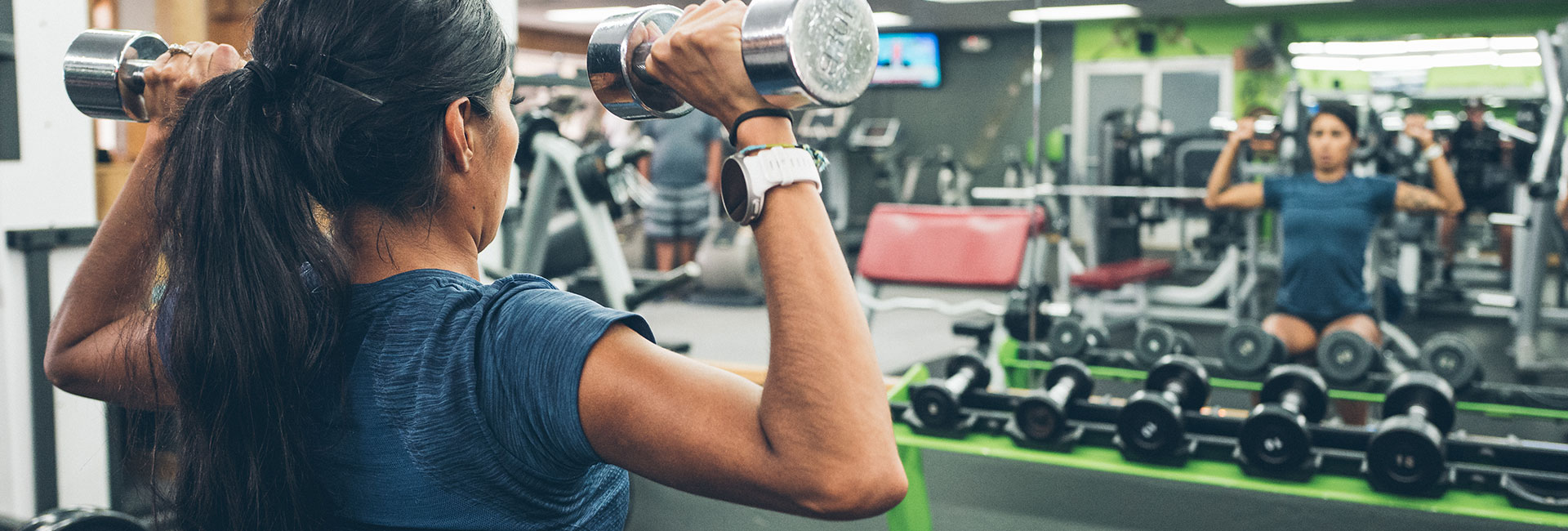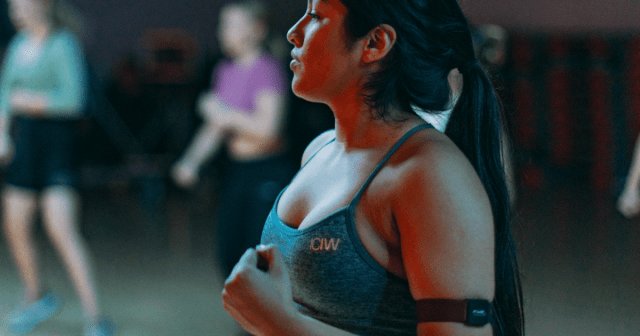Whether you’re a beginner who wants to add muscle or an experienced triathlete looking for ways to take your performance to the next level, strength training in the gym is a necessary evil.
But while many endurance athletes might be used to the stress of cardiovascular activities associated with swimming, cycling, and running, the gym can be foreign and intimidating.
To help get you started training in the gym this off-season, we asked triathlete and fitness guru Nils von Muster-Kistner to answer some of the common questions associated with strength training for triathletes and what you can do to maximize your performance.
Focus Your STRENGTH TRAINING on your Weak Spots
There’s no better time to begin working on your weak spots than the off-season. As specific weak spots can vary greatly from person to person, it’s important to put some time in before you hit the gym and analyze where you’ve had problems during the previous seasons.
According to Kistner, focusing on any nagging injuries is a good place to start.
“The athlete is probably the one who knows best as soon as he starts thinking back. Which areas are always tight, where do I feel weak, and have I suffered injuries? All that information put together will paint the bigger picture.”
- If you commonly suffer from ITBS (iliotibial band syndrome), focusing some of your gym time on hip mobility and strengthening the quadriceps, gluteus medius and core could help.
- If your shoulder has bothered you during the swim leg, then rotator cuff strengthening will need to be one of the things you focus on.
But what if you can’t pinpoint a specific area of tightness or haven’t suffered significant injuries, and a general lack of strength seems to be the thing holding you back?
“Often for age group athletes, general strength is what they’re lacking so focusing on multi-joint, whole-body movements is a good idea for everyone – targeting major muscle groups used for swimming, cycling, and running, and also adding few accessory movements for the rotator cuff, for instance, which is mainly used inward rotating in the swim.”
While it can take some time experimenting with a workout program that works for you, focusing on weak areas of the body and completing exercises that include full-body movements will indeed make you stronger and lead to improved sport-specific performance.
In addition, the FitSpark daily training guide will give you personalized workout suggestions so you don’t have to plan what to do.
If you don’t feel confident in the gym and want a little more guidance, triathletes can also benefit from seeking the advice of a personal trainer to help you formulate a personalized strength training plan.
How Much Strength Training Should triathletes Be Doing?
Once you’ve decided that the gym will be part of your off-season training plan, there are a few questions that often pop up immediately for most triathletes, such as:
- How often do I need to go to the gym?
- How many reps should I do?
These are common points of contention, and with conflicting advice it can be hard to know what exactly you’re supposed to do. While there’s no right answer for everyone, in Kistner’s experience he does have some recommendations for triathletes who are new to this form of training.
How Many gym sessions per week should triathletes do?
“During the base phase, strength training shouldn’t harm the rest of your training as long as you’re smart,” Kistner says.
This means that:
- If you have hard cycling intervals on your schedule, you probably shouldn’t lift heavy on that same day.
- If you’re sore from lifting the previous day, easy spinning can be the perfect way to enhance recovery.”
In most cases, two to three gym sessions per week is sufficient.
How many reps?
This is where Kistner recommends a different approach for triathletes who are new to strength training and those who are more experienced.
When you’re new to strength training…
“I recommend starting with three sets of higher reps in the 20 to 30 range. The focus here should be on a good technique, and having someone to help you achieve the correct form is the best case scenario.”
“Higher reps will help you get used to the load and the movement, which may be different from the kind of workouts triathletes are used to.”
Once you’ve adapted to strength training…
After you’ve gotten the hang of it and you aren’t as sore as you were in the first few weeks of your training sessions, this is the time you can begin to add more weight.
Kistner also recommends tapering off your strength training when you get within two weeks of your “A” race during the season.
During the racing season…
During the rest of your race season, one session per week will be enough to maintain the strength you’ve built during the winter. Once you’ve shifted from the off-season to the racing season, Kistner advises working in the eight to 12 repetition range at a weight you can maintain correct form for the duration of the workout.
All the time…
Listening to your body and treating your strength training sessions like any other hard workout is a must to prevent injury. This means adding recovery in between sessions and taking soreness and fatigue into account before your next hard workout. Of course, how much weight you lift and how many reps you do will play a factor in how you feel too.
Strength training Exercises to Get You Started
Whether you’re a beginner or experienced, Kistner advises concentrating on compound movements with free weights rather than isolated movements with machines that focus only on one muscle group when possible. This will give you the most bang for your buck in terms of strength training and make the biggest difference in your overall performance as a triathlete.
Below are two different gym conditioning routines Kistner suggests for beginners and those who are ready for more advanced sessions. Once you progress in your training you can do each workout series once per week.
Full-Body Workout
Start with three sets of 20 reps.
- Squats
- Deadlifts
- Bench Press
- Pull-Ups
- Lat Pull Downs
Advanced Workout
- Single-Leg Deadlift
- Lunges
- Step-Ups
- Single-Arm Rowing
- Dumbbell Shoulder Press
If you liked this post, don’t forget to share so that others can find it, too.
Or give it a thumbs up!
I like this article
Please note that the information provided in the Polar Blog articles cannot replace individual advice from health professionals. Please consult your physician before starting a new fitness program.




